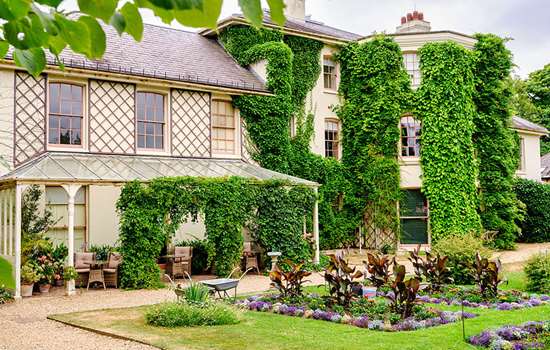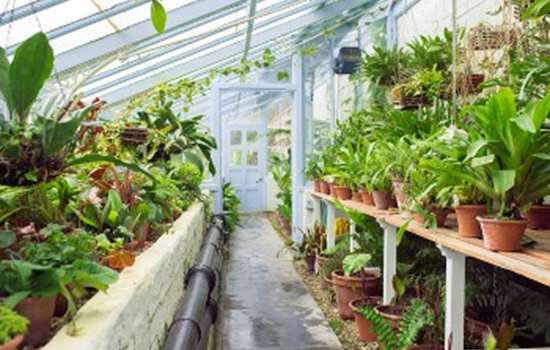Theory of Natural Selection
Darwin’s theory of natural selection had two main strands. Firstly, Darwin wanted to gain a clear insight into how plants and animals changed and adapted to their environment over a long course of time. Secondly, he wanted to show the struggle of existence amongst all living things, observing how the fittest survived and passed on any advantageous traits to the next generation. For Darwin’s theories to work, he also had to prove a third strand: that the world was much older than was believed at that time.
Today we can categorise Darwin’s theories published in On the Origin of Species into five groups: variation, adaptation, inheritance, selection and time. Through experiments in his garden at Down House, Darwin was able to test each of these theories.
Variation
Before Darwin, it was believed that variations within the same species of animal were caused by the environments the animals lived in. But Darwin noticed that these differences still appeared even in environments that had stayed the same for a long time.
Darwin’s Pigeon House:
Darwin wanted to test the theory that variations were passed down from parent to offspring. In 1855 he entered the world of the pigeon-fancier and constructed a pigeon house at Down House, where he kept a large collection of these birds. He even enlisted his daughter Henrietta to help him look after them. In May that year he wrote
I have got my Fan-tails & Pouters (choice birds, I hope, as I paid 20s for each pair from Bailey) in a grand cage & Pigeon House, & they are a decided amusement to me, & a delight to Etty [Henrietta].
Darwin studied the huge differences between their beak shapes, neck lengths, wings and tail feathers. By studying the skeletons of the pigeons, he was able to confirm that although these pigeons had differences, they were all related to the same kind of wild rock pigeon. Darwin showed that by choosing the features of different pigeons and breeding them together, they could develop distinctive features very quickly. Through this example, Darwin explained how animals in the wild develop variations over a long time to help them adapt to their environment.
Adaptation
Darwin believed that animals and plants adapted to their environment and that those with special features that helped them survive would then reproduce and pass on these special features to the next generation. Darwin’s experiments into adaption are a showcase into how he worked, carefully observing and recording his findings.
Climbing Plants:
Darwin looked at many different types of climbing plants and saw that they had several different types of climbing mechanisms. On the verandah at Down House there are examples of these mechanisms including hook and root (ivy), twining (wisteria), tendrils (Virginia creeper) and leaf stalks (clematis). Darwin believed that each of these different methods was an adaptation to a specific environment in order for these plants to reach the light they needed to survive.
Seed Dispersal
Before Darwin published his theory of natural selection, many people thought that every environment in the world had been created with its own type of plants. By studying the different ways in which seeds spread Darwin wanted to prove that plants can move from one area to another, slowly adapting to different environments. As part of this he wondered if seeds could cross oceans. He embarked on detailed experiments to understand how long seeds could float and survive in sea water.
His floating experiments appear to have been particularly irksome at times. He wrote to his friend and botanist Joseph Hooker in 1855 ‘the bore is the confounded seeds will sink, I have been taking all this trouble in salting the ungrateful rascals for nothing’. He did, however, find several species that did float and germinate after being in salt water, showing one way plants could move from one land to another.
Inheritance
Darwin wanted to know how plants and animals inherited certain features to support his theories of natural selection.
The Experimental Beds
In the 1850s, Darwin took over a corner of the kitchen garden for his ‘experimental beds’. He would later write to Hooker explaining:
I have this morning been looking at my experimental Cowslips & I find some plants have all flowers with long stamens & short pistils which I will call ‘male plants’—others with short stamens & long pistils, which I will call ‘female plants’.
He had noticed that cowslips had two different types of flower structure – a ‘long-styled form’ and a ‘short-styled form’. He believed this existed to compel an insect pollinator to cross-fertilise between two plants of the same species. This cross-fertilisation – rather than self-fertilisation that occurs in some flowering plants – means cowslips can inherit unique traits from different ‘parent’ plants allowing them to change and evolve over time. Darwin observed the same feature in the Primroses he grew in his experimental beds.
In 1855 he experimented with cross-breeding double-flowered hollyhocks, as he felt that they ‘seem to offer puzzling & curious facts’. He planted 18 different types side by side in order to have two varying ‘parent’ plants reproduce. Darwin was surprised when the seeds from this experiment grew into plants that were the same colour as only one of the parent plants, rather than a combination of features from both parents.
At the time, Darwin was unable to solve this particular mystery, but we now know that some features (such as colour) can be hidden in one generation and then reappear in another generation. It was Gregor Mendel (1822–84) that revealed the basics of genetic inheritance, through his own experiments on pea plants, long before DNA was discovered.
Selection
Darwin was interested in how plants and animals were in competition with each other to survive.
The Weed Garden
In January 1857 he cleared a small patch of ground in his garden and watched to see what weeds would appear. He went to the weed garden every day and marked any new seedlings with a wire. He was surprised at how many seedlings came up and was even more surprised at how few survived. By August, of the 357 seedling he marked only 62 had survived – the rest were mainly eaten by slugs and insects.
Through this experiment Darwin was able to show that the hard struggle for existence by plants and animals was taking place everywhere, even in this tiny bit of soil.
Plant and Animal Connections
Darwin also wanted to show how plants or animals that seem unconnected, can have unexpected effects on each other’s survival. In 1859 Darwin covered a patch of his meadow with netting, protecting it from bumblebees. When compared with the open meadow, he discovered that clover flowers visited by bumblebees produced many more seeds.
Using this evidence, and his understanding that field mice decreased bee populations by raiding their nests, Darwin was able to explain the complicated connection between cats, mice, bumblebees and clover.
near villages and towns I have found the nests of humble bees more numerous which I attribute to the number of cats that destroy the mice…Hence it is quite credible that the presence of a feline animal in large numbers…might determine, through the intervention of mice and then of bees, the frequency of certain flowers in that district!
This is probably the earliest discussion of ecological food chains in scientific literature and demonstrated the mostly unseen and incredibly complex connections between plants and animals.
Time
In order for Darwin’s theories of evolution to work, he had to prove that the world was at least hundreds of millions of years old, much older than previously thought.
When Darwin moved to Down House in 1842 he spread some patches of chalk and cinders over the surface of the ground. After 27 years, Darwin dug in these patches to find they had sunk to a depth of 7 inches. He argued that this was due to the worms constantly turning the soil over by burrowing and bringing their casts up to the surface. Later, his son, Horace, designed a special instrument for his father to measure the action of worms. A replica of the base of this ‘wormstone’ instrument can be seen in the garden at Down House today.
Darwin used these experiments to show how a modest force constantly applied could cause large effects over time. In On the Origin of Species Darwin did some calculations based on the rate at which the weald (a large area of southern England near Down House) had been eroded. From these he concluded that 300 million years had elapsed since the Cretaceous period. This was much debated by other geologists and physicists, and was later revised downwards. However, Darwin used this evidence to show that there had been enough time for natural selection to have produced the plants and animals we see around us.
Darwin’s Garden Today
At Down House today, gardeners, volunteers and academics continue to record, monitor, and observe the garden, as well as carrying out many of Darwin’s experiments he conducted here. The weed garden, lawn plot and wormstone can be seen on the main lawn and hollyhocks and primroses grow in the kitchen garden, providing a glimpse into Darwin’s ‘living laboratory’.
Written by Emily Parker
FURTHER READING
Browne, J, Desmond, A and Moore, J, Charles Darwin (Oxford, 2007)
Costa, J, How Small Experiments led to a Big Theory (London, 2017)
Darwin Correspondence Project, University of Cambridge (accessed 24 May 2021)
Darwin Online (accessed 24 May 2021)
Explore More
-

Visit Down House
The great scientist’s country-house home and ‘outdoor laboratory’
-

Recreating Darwin's Experiments
Find out how English Heritage staff recreated one of Darwin’s important studies into the movement of plants.
-

History of Down House
Learn more about the history of Down House – Charles Darwin’s home for 40 years until his death in 1882. It was here that Darwin developed his theory of evolution by natural selection.
-

Garden Highlights
Browse some of the highlights of the garden at Down House including the Great House Meadow, the Sandwalk, and Darwin’s greenhouse and experimental beds.

